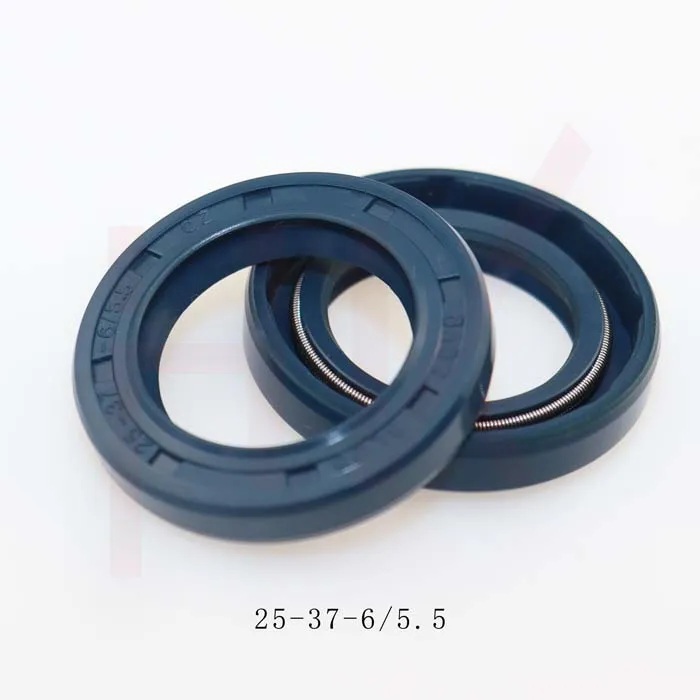Nov . 28, 2024 01:10 Back to list
Understanding Rotary Shaft Oil Seals and Their Importance in Mechanical Applications
Understanding Rotary Shaft Oil Seals
Rotary shaft oil seals are critical components in various mechanical systems, preventing the leakage of lubricants and contaminants in rotary equipment. These seals are designed to fit around rotating shafts, creating a barrier that protects internal mechanisms from external elements while ensuring optimal performance and longevity of machinery.
Types of Rotary Shaft Oil Seals
Rotary shaft oil seals come in various designs, depending on their applications. The most common types include
1. Single Lip Seals These consist of a single sealing lip that presses against the shaft. This simple design is effective for lower-pressure applications and provides a basic level of protection against oil leakage.
2. Double Lip Seals Featuring two sealing lips, double lip seals offer enhanced protection. The secondary lip helps prevent contaminants from entering while ensuring that the inner lubricant remains contained.
3. Spring-Aided Seals These seals include a spring that applies additional pressure to the sealing lip against the shaft. This design is particularly beneficial in applications where shaft vibrations or deviations occur, ensuring a tighter seal.
4. Non-Rotating Seals Some designs incorporate a non-rotating component that helps the seal maintain its position while the shaft rotates. This feature is crucial in high-performance machinery where misalignment can lead to seal failure.
Materials Used in Oil Seals
The effectiveness of rotary shaft oil seals also depends on the materials used in their construction. Common materials include
- Nitrile Rubber (NBR) Known for its excellent oil resistance and durability, NBR is widely used in automotive applications where exposure to petroleum-based oils is frequent.
rotary shaft oil seals

- Fluoroelastomer (FKM) This material offers exceptional resistance to high temperatures and aggressive fluids, making it ideal for heavy machinery and aerospace applications.
- Polyurethane Known for its elasticity and durability, polyurethane is often used in situations where seals encounter extreme conditions
.Selecting the right material is essential for ensuring the seal performs as intended throughout its lifecycle.
The Importance of Proper Installation
The effectiveness of rotary shaft oil seals relies heavily on their correct installation. Improper installation can lead to premature seal wear, leakage, and ultimately equipment failure. It’s crucial to follow manufacturer guidelines, including
1. Preparation of the Shaft Ensure that the shaft surface is clean, smooth, and free from damage or corrosion, which can compromise the seal's integrity.
2. Correct Orientation Verify that the seal is installed in the correct orientation, with the lip facing the area that needs protection (usually inward towards the oil reservoir).
3. Proper Tooling Use appropriate tools to install the seal without damaging its lip or the shaft surface. Specialized seal installation tools can help maintain the seal’s geometry during fitting.
Conclusion
In summary, rotary shaft oil seals play a vital role in maintaining the efficiency and reliability of machinery across various industries. By preventing oil leakage and ingress of contaminants, they significantly extend the life of rotating equipment. Understanding the different types of seals, the materials used, and the importance of proper installation can help in selecting the right oil seal for specific applications. Regular maintenance checks and timely replacement of seals can further enhance mechanical performance and reduce the risk of costly repairs. In an age where machinery reliability is paramount, investing in quality rotary shaft oil seals is a choice no industry should overlook.
-
Wiper Oil Seal: Our Commitment to Clean Hydraulics
NewsAug.13,2025
-
Hydraulic Oil Seal for Self Discharging Cars
NewsAug.13,2025
-
Hub Oil Seal for Agricultural Tractor Hubs
NewsAug.13,2025
-
Skeleton Oil Seal with NBR Material
NewsAug.13,2025
-
Rotary Lip Seal for High Pressure Applications
NewsAug.13,2025
-
Cylinder Seal Kits Our Legacy of Hydraulic Trust
NewsAug.13,2025
-
Unlocking the Potential of Hydraulic Systems with Essential Sealing Solutions
NewsAug.06,2025
Products categories
















